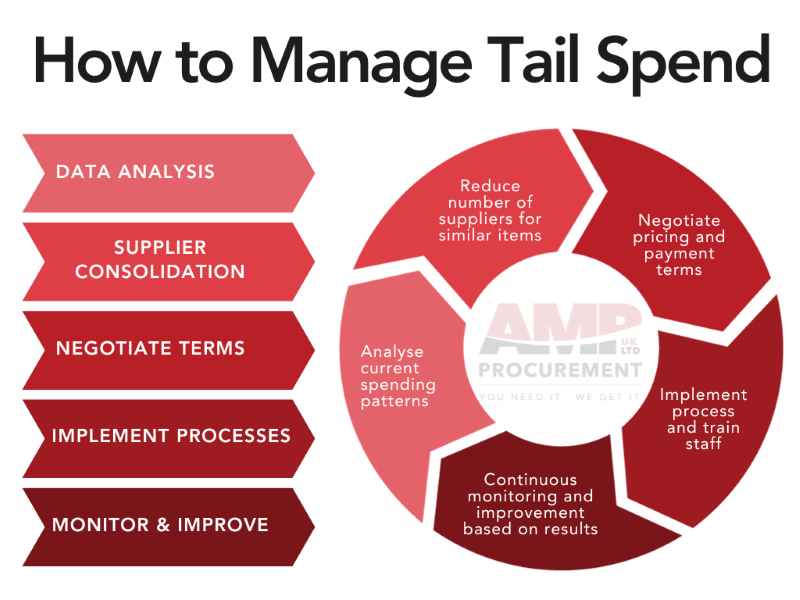
How to Manage Tail Spend in 5 Steps
Effectively managing tail spend is an essential part of the procurement processes to improve cost savings and improve overall operational efficiency. Here we will outline a 5-step approach to manage tail spend in a business.
Tail spend refers to the small, low-value purchases that collectively make up a significant portion of a company’s procurement spending. Although each individual transaction may seem insignificant, this can add up quickly and have a substantial impact on the company’s overall expenses.
By focusing on reducing this tail spend, the company aims to generate cost savings and streamline procurement operations.
Data Analysis and Categorisation
To effectively manage tail spend, start by analysing procurement data to identify tail spend categories and their corresponding suppliers. Categorise expenses based on their nature, frequency, and total spending to prioritise which areas to target for cost reduction.
Supplier Consolidation
With a clear understanding of the tail spend categories, consolidate the number of suppliers used for similar items. Reducing the number of suppliers can lead to improved pricing and easier contract management.
Negotiate Better Terms
Negotiate favourable terms and conditions with the chosen suppliers to secure better pricing, discounts, and extended payment terms. By leveraging the company’s total spending potential, the company can negotiate more effectively, resulting in additional cost savings.
Employee Education and Policy Compliance
Educate employees about the importance of adhering to the company’s procurement policies and guidelines. Emphasize the significance of purchasing from approved vendors and discourage rogue spending. Encourage employees to submit purchase requisitions through the e-procurement platform to enhance visibility and control over tail spend.
Continuous Monitoring and Improvement
Implement a robust monitoring system to track tail spend regularly. Analyse spending patterns, identify potential cost-saving opportunities, and make data-driven decisions. Continuously review and adjust tail spend management strategies to adapt to changing business needs and market conditions.
These 5 steps are a great start for managing tail spend, but it is a long and time consuming process which is not always easy. Tail Spend Management is often overlooked as a priority due to the time commitment and the lower cost of tail spend purchases, but in the long run it is worth tackling.
Tail spend management can be time consuming for teams, especially considering the continual review and analysis to fully benefit. It is possible to outsource to procurement specialists who will be better able to negotiate with suppliers and already have policies and quality standards in place.
Manage Tail Spend Example
As an example, we will imagine a medium-sized company that regularly procures office supplies for its various departments trying to manage tail spend more effectively. The finance department identifies that a significant amount of tail spend is allocated to office supplies, such as stationery, printing paper, etc.
Data Analysis and Categorisation: Office supplies are identified as a key tail spend category.
Supplier Consolidation: The company decides to work with a single vendor or a limited number of preferred suppliers for office supplies.
Negotiate Better Terms: Using a sole vendor, the company can then negotiate better terms such as volume-based discounts and develop a better relationship with the supplier.
Employee Education and Policy Compliance: Employees will now follow a process when purchasing office supplies ensuring the correct vendors are used, discounts are applied and purchases are consistent across the company.
Continuous Monitoring and Improvement: The finance team will compare results before and after implementation to note any significant changes. Further improvements will be made for other departments, further discounts and terms will be negotiated and the process will continue.
This example can be applied to many businesses across all industries and sizes, the core principles remain the same. If you have any questions about tail spend management or are interested in working with tail spend specialists you can contact us.



